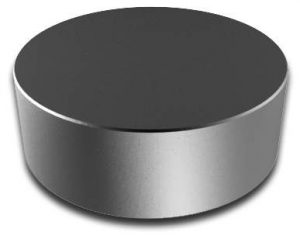
Magnets are often characterized as either soft ferrite or hard ferrite. Both soft ferrite and hard ferrite magnets are typically made of a ceramic material. That’s why they are known as “ferrites.” Ferrites are magnetic compounds consisting primarily of iron oxide that’s mixed with other metals, some of which may include zinc, nickel, barium and manganese. Iron oxide is mixed with some of these other metals to create ferrite, which is then used to create a ferrite magnet. Some ferrite magnets, however, are soft, whereas others are hard.
What Are Soft Ferrite Magnets?
Soft ferrite magnets are those that have a low coercivity. What does this mean exactly? Coercivity is a measurement of a magnetic material’s ability to withstand external magnetic forces without becoming demagnetized. Some magnetic materials are more susceptible to demagnetization when exposed to an external magnetic force than others. Soft magnets have a low coercivity, meaning they offer a low level of protection against demagnetization.
Because of their low coercivity, soft ferrite magnets are commonly used in electrical applications. Power transformers, for instance, often contain soft ferrite magnets. Other applications for soft ferrite magnets include microwaves, radio antennas and inductors. Soft ferrite magnets can quickly and easily change their magnetic orientation.
What Are Hard Ferrite Magnets?
Hard ferrite magnets are ceramic magnets that, as you may have guessed, have a high coercivity. They are still comprised of iron oxide and various metallic elements. Both soft ferrite and hard ferrite magnets are types of ceramic magnets. The difference is that soft ferrite magnets have a low coercivity, whereas hard ferrite magnets have a high coercivity.
Hard ferrite magnets are less susceptible to demagnetization than soft ferrite magnets. When exposed to an external magnetic force, they typically won’t become demagnetized. Common applications for hard ferrite magnets include stereo speakers, electric motors and material handling magnets.
In Conclusion
Ceramic magnets are also known as ferrite magnets because of their composition. They are comprised of iron oxide with various metallic elements. When mixed together, these compounds create a magnetic material known as ferrite. Soft ferrite magnets simply have a low coercivity, whereas hard ferrite magnets have a high coercivity. A low coercivity means that soft ferrite magnets are more susceptible to demagnetization when exposed to an external magnetic force.
